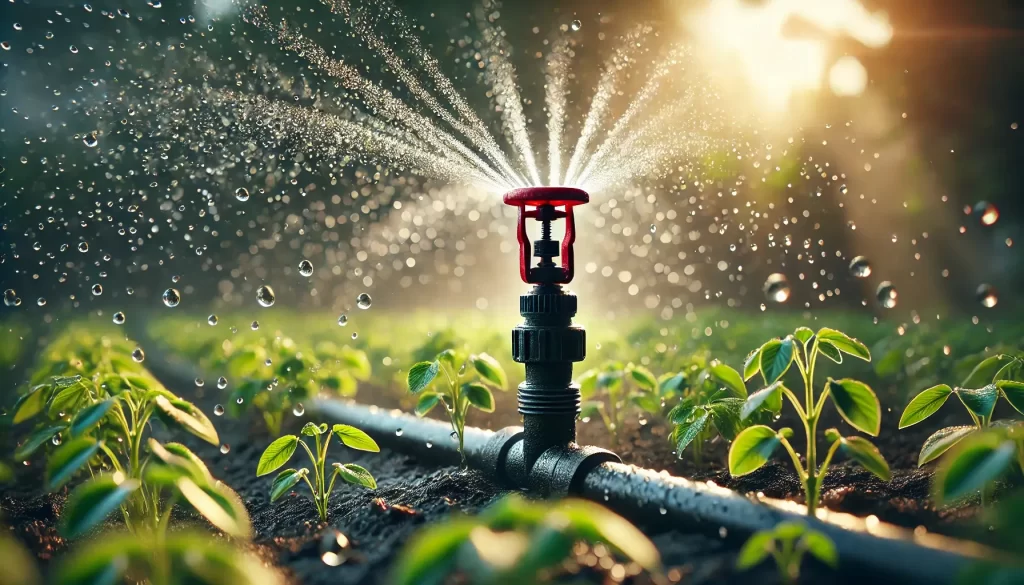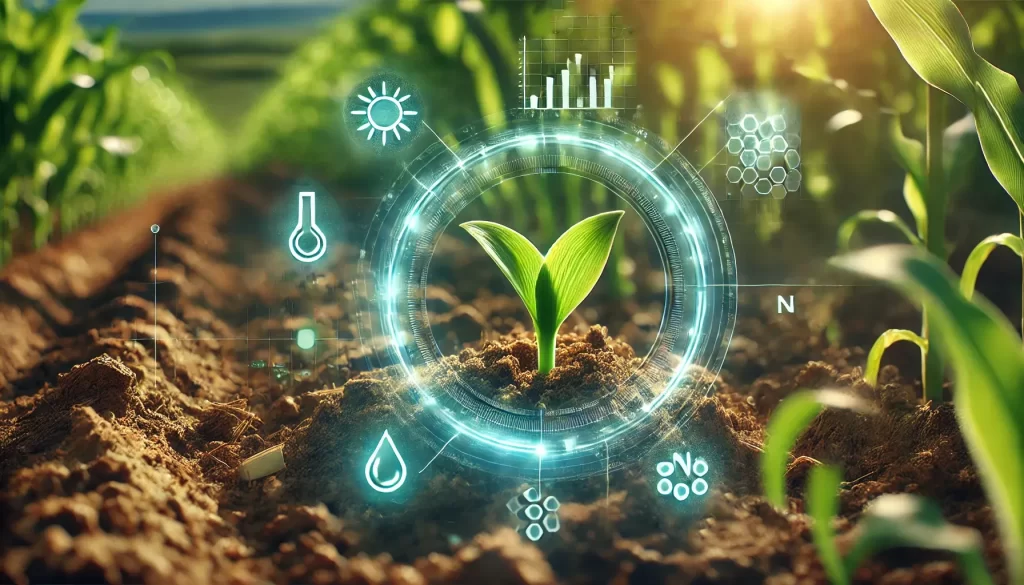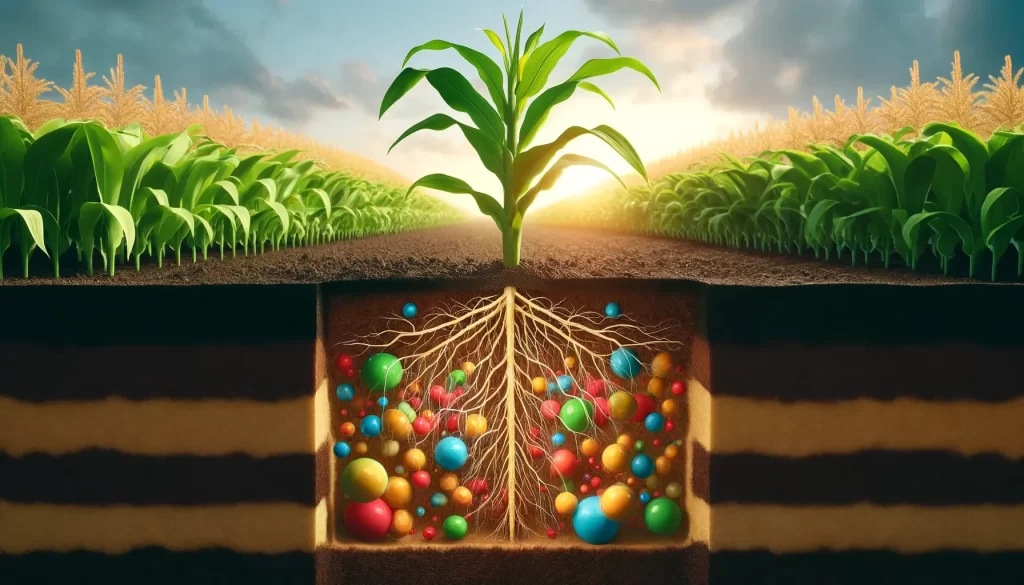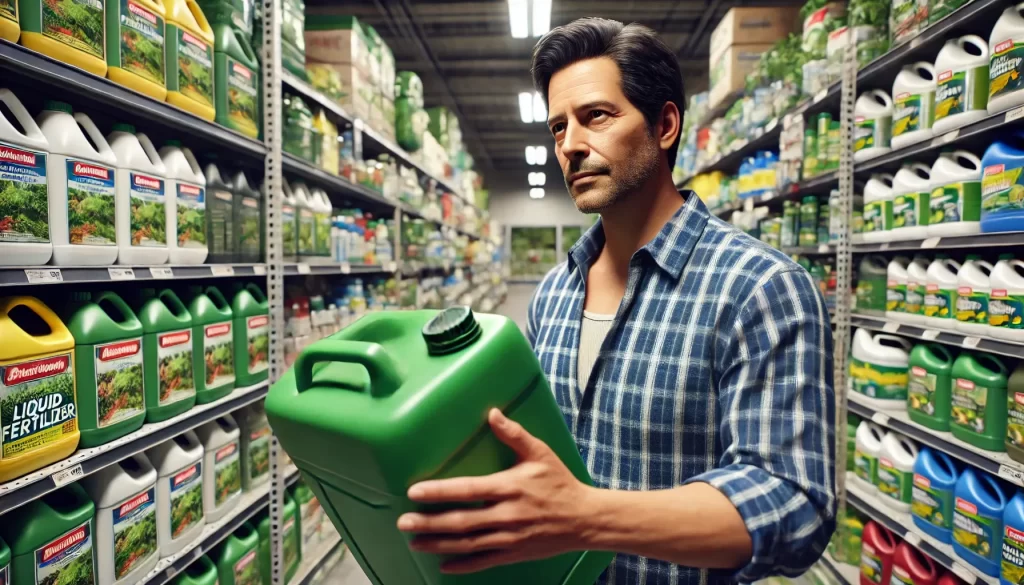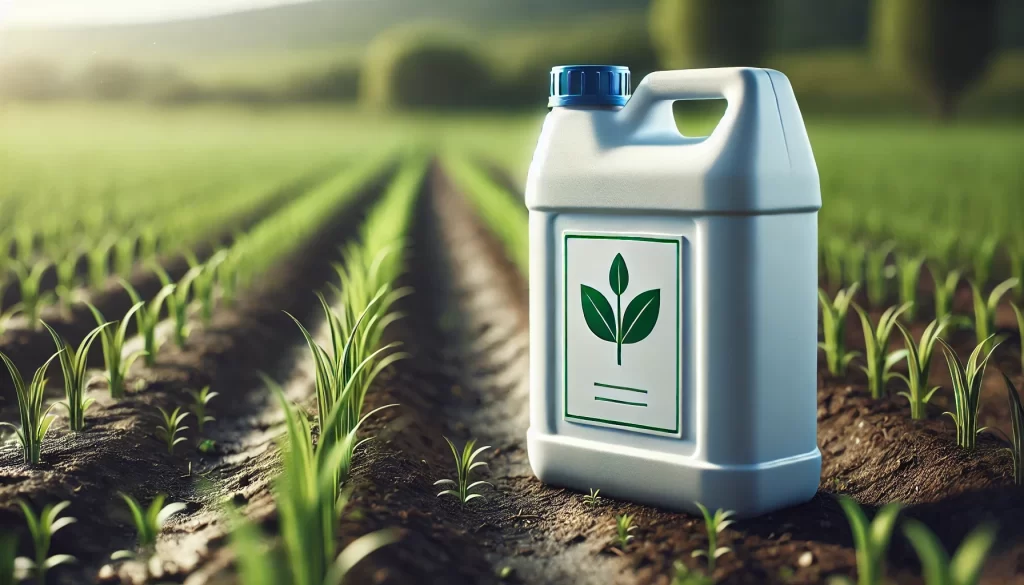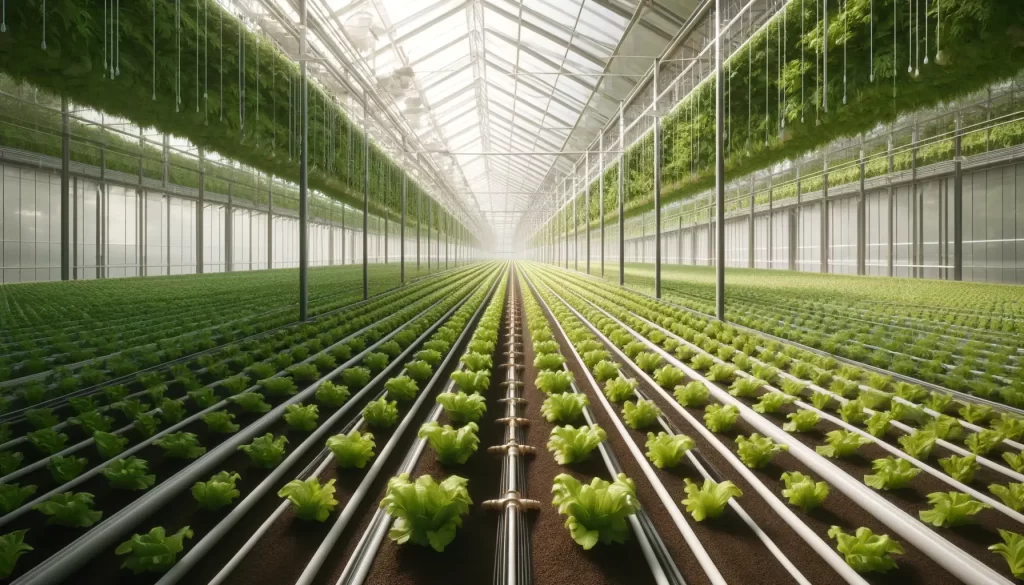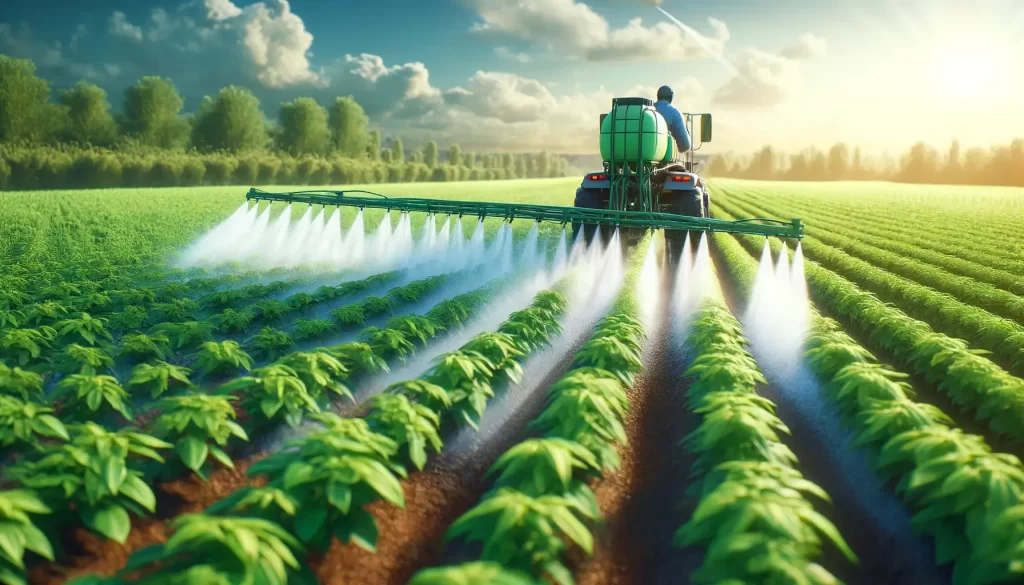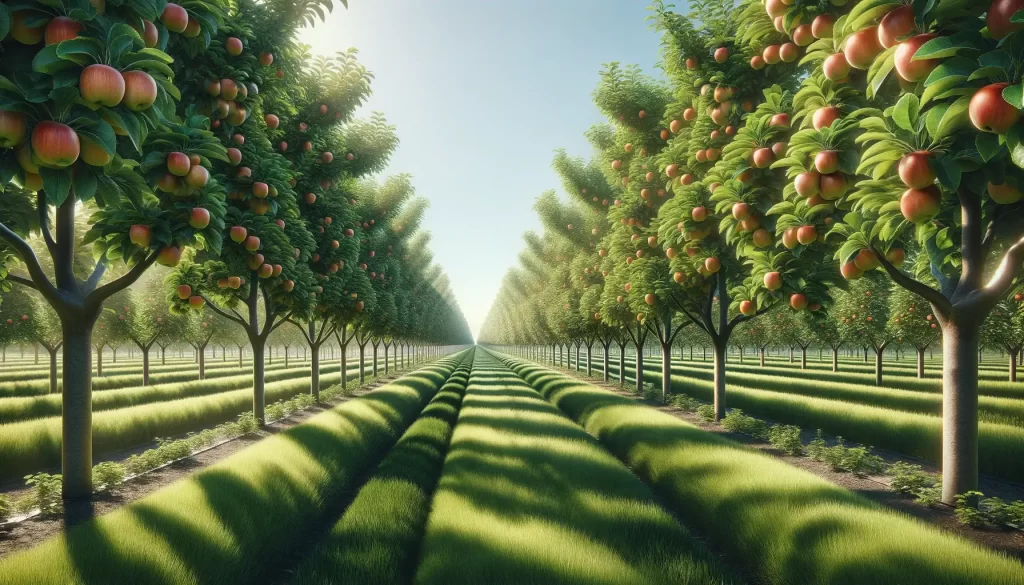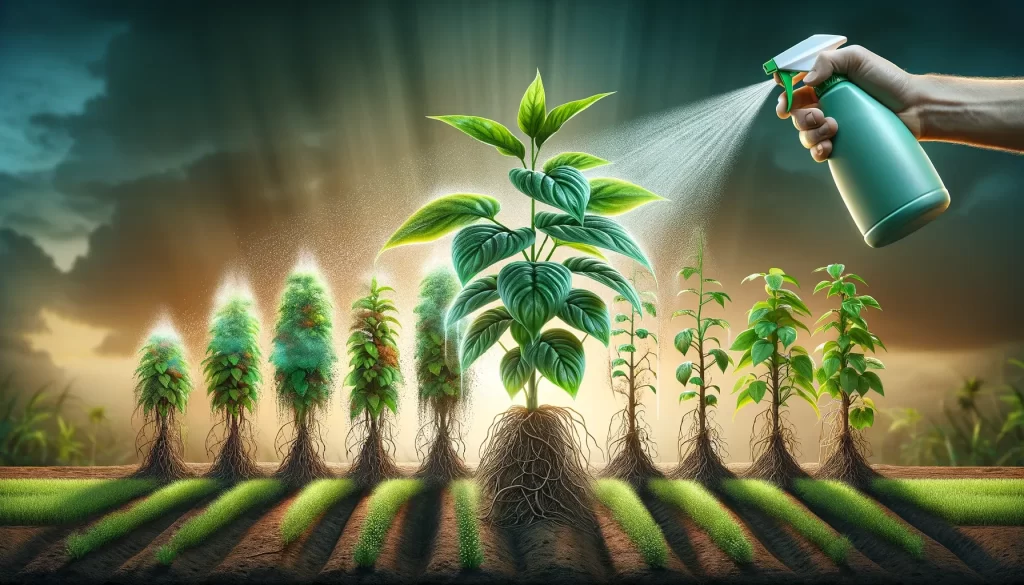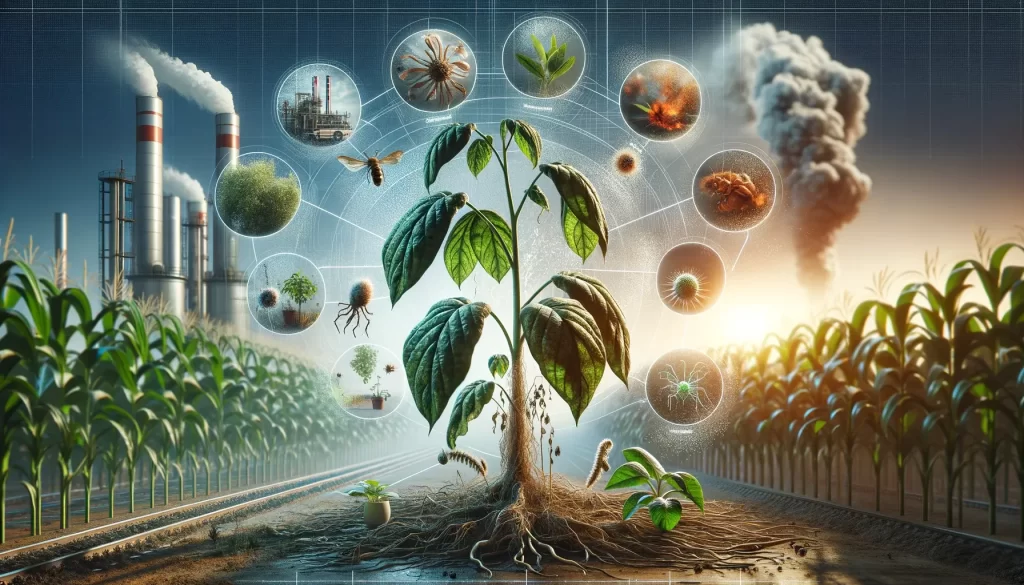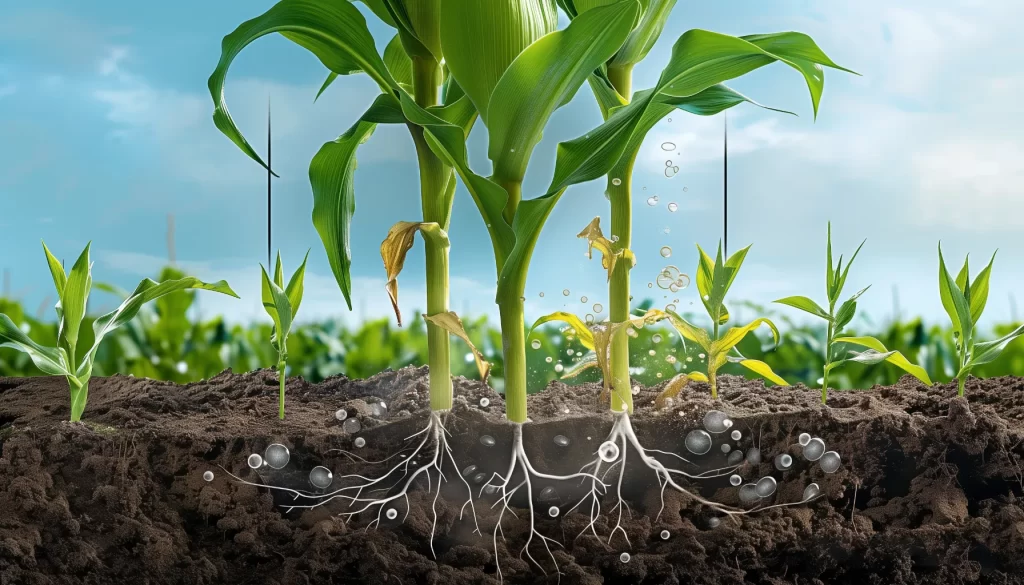Efficiency and sustainability in agriculture are two of today’s most important food security concerns. In this context, liquid fertilizers have become increasingly popular among agriculturalists in recent years. Offering many advantages such as rapid absorption and effect, easy application and use, and effective use of nutrients, liquid fertilizers offer an ideal solution to quickly and effectively eliminate nutrient deficiencies in the soil.
However, to benefit from the full potential of liquid fertilizers, it is critical to ensure their even distribution into the soil. Equitable distribution ensures that nutrients are used fairly by all plants, increasing productivity, minimizing nutrient loss and reducing damage to the environment. In this article, we will examine the importance of evenly distributing liquid fertilizers to the soil, different application methods and the solutions offered by Greenlive on this issue.
Advantages of Liquid Fertilizers: A Powerful Solution for Productivity and Sustainability
Liquid fertilizers are an extremely useful and effective type of fertilizer that offers many advantages in agricultural production. Some of these advantages are:
Fast Absorption and Effect: Liquid fertilizers are absorbed faster and used by plants faster than granular fertilizers. This allows nutrient deficiencies to be quickly eliminated and plant growth to accelerate.
Easy Application and Use: Liquid fertilizers can be easily applied by irrigation systems or by hand spraying. This significantly reduces implementation time and labor.
Effective Use of Nutrients: Liquid fertilizers deliver nutrients directly to plant roots in the soil. This minimizes nutrient loss and ensures more efficient use of nutrients by plants.
Environmentally Friendly and Sustainability: Liquid fertilizers create less dust than granular fertilizers and have a lower risk of causing soil erosion. Additionally, since liquid fertilizers are water-soluble, there is a lower risk of nutrients leaching into groundwater.
Suitability for Different Plant Species: Liquid fertilizers can be used for a variety of plant species with different nutrient requirements. This makes them a versatile and easy-to-use type of fertilizer.
Even Distribution of Liquid Fertilizers in the Soil: The Key to Increasing Productivity
To benefit from the full potential of liquid fertilizers, it is critical to ensure their even distribution into the soil. Equitable distribution ensures that nutrients are used fairly by all plants, increasing productivity, minimizing nutrient loss and reducing damage to the environment.
Equal distribution of liquid fertilizers into the soil varies depending on the application method used.
Even Distribution of Liquid Fertilizers in the Soil: Different Application Methods and Effects
Application with Irrigation Systems:
One of the most common application methods of liquid fertilizers is through irrigation systems. This method is one of the most effective methods to ensure even distribution of fertilizer into the soil. Irrigation systems distribute liquid fertilizer into the soil in a slow and controlled manner, allowing nutrients to be absorbed more efficiently by plant roots.
Some advantages of liquid fertilizer application with irrigation systems are:
- Equal distribution: Irrigation systems ensure that fertilizer is distributed equally to the soil, ensuring that nutrients are used fairly by all plants.
- Convenience: Liquid fertilizer application with irrigation systems is easy and time-saving.
- Efficiency: Application of liquid fertilizer through irrigation systems increases productivity by ensuring more efficient absorption of nutrients by plant roots.
However, there are some disadvantages of applying liquid fertilizer with irrigation systems:
- Cost: Irrigation systems can be expensive with installation and maintenance costs.
- Technical knowledge: Certain technical knowledge is needed for the installation and use of irrigation systems.
- Flexibility: Irrigation systems may not be able to adapt to changing weather conditions and soil conditions.
Foliar Application:
Liquid fertilizers can also be used via foliar application. Foliar application is a method that ensures rapid absorption of nutrients by plants. This method is especially useful for plants showing signs of nutrient deficiency.
Some advantages of foliar application are:
- Fast effect: Foliar application shows a rapid effect by ensuring rapid absorption of nutrients by plants.
- Targeted nutrition: Foliar application can provide specific nutrients to plants showing signs of nutrient deficiency.
- Flexibility: Foliar application can adapt to changing weather conditions and soil conditions.
However, foliar application also has some disadvantages:
- Risk of burns: If the concentration of liquid fertilizer used in foliar application is too high, it may damage the plants.
- Low efficiency: Foliar application is not as efficient as the absorption of nutrients by plant roots.
- Cost: Special equipment may be needed for foliar application.
Effect of Soil Properties:
Equal distribution of liquid fertilizers into the soil varies depending on the type and texture of the soil. While liquid fertilizers move faster in sandy soils, they move slower in clay soils. Therefore, it is important to use different methods and doses according to soil type and texture when applying liquid fertilizer.
The following can be done to increase the even distribution of liquid fertilizers into the soil:
- Correct application method: The application method appropriate to the soil type and texture should be chosen.
- Correct dose: Liquid fertilizer should be applied at the correct dose according to soil test results.
- Mixing: Liquid fertilizer should be mixed thoroughly with the soil.
- Irrigation: After applying liquid fertilizer, the soil should be moistened with irrigation.
Liquid Fertilizer Selection and Application: Solutions Offered by Greenlive
Greenlive offers high-quality liquid fertilizers designed to increase efficiency and sustainability in agricultural production. Greenlive liquid fertilizers are specially formulated to offer even distribution and fast effect.
Greenlive offers a variety of services to assist its customers in the selection and application of liquid fertilizer:
Product Consultancy: Greenlive experts help customers choose the most suitable liquid fertilizer according to soil analysis results and plant types.
Application Support: Greenlive offers customers technical support and application guidance for the correct application of liquid fertilizers.
Wholesale Dealership: Greenlive has a wide distribution network by offering its liquid fertilizers to wholesale dealers.
Research and Development: Greenlive continues to invest in research and development to constantly develop new and more effective liquid fertilizer formulas.
Some advantages of liquid fertilizers offered by Greenlive are:
- Equal distribution: Greenlive liquid fertilizers distribute evenly into the soil and ensure fair use of nutrients by all plants.
- Fast effect: Greenlive liquid fertilizers show a rapid effect by ensuring that nutrients are quickly absorbed by plants.
- High efficiency: Greenlive liquid fertilizers increase productivity by ensuring more efficient use of nutrients by plants.
- Environmentally friendly: Greenlive liquid fertilizers are produced in an environmentally friendly manner and do not cause soil and water pollution.
- Affordable: Greenlive liquid fertilizers are affordable for a high quality product.
To learn more about Greenlive liquid fertilizers and to apply for wholesale dealership, please https://www.greenlive.com Visit our website .tr/contact.
Equal Distribution and Advantages of Liquid Fertilizers
Liquid fertilizers are a powerful solution to increase efficiency and sustainability in agricultural production. Liquid fertilizers, distributed evenly in the soil, increase productivity by ensuring more efficient use of nutrients by plants, minimize nutrient loss and reduce damage to the environment.
Greenlive liquid fertilizers are specially formulated to offer even distribution and rapid effect. Greenlive offers a variety of services to assist its customers in the selection and application of liquid fertilizer.
You can increase efficiency and sustainability in agricultural production with Greenlive liquid fertilizers.
Frequently Asked Questions (FAQ) About Even Distribution and Advantages of Liquid Fertilizers in the Soil
What are Liquid Fertilizers?
Liquid fertilizers are a type of fertilizer that contains water-soluble nutrients. It is absorbed faster and used by plants faster than granular fertilizers. This allows nutrient deficiencies to be quickly eliminated and plant growth to accelerate.
What are the Advantages of Liquid Fertilizers?
Liquid fertilizers have many advantages, including:
- Fast absorption and effect: Liquid fertilizers are absorbed faster and used by plants faster than granular fertilizers. This allows nutrient deficiencies to be quickly eliminated and plant growth to accelerate.
- Easy application and use: Liquid fertilizers can be easily applied by irrigation systems or by hand spraying. This significantly reduces implementation time and labor.
- Effective use of nutrients: Liquid fertilizers deliver nutrients directly to plant roots in the soil. This minimizes nutrient loss and ensures more efficient use of nutrients by plants.
- Environmentally friendly and sustainability: Liquid fertilizers create less dust than granular fertilizers and have a lower risk of causing soil erosion. Additionally, since liquid fertilizers are water-soluble, there is a lower risk of nutrients leaching into groundwater.
- Suitability for different plant species: Liquid fertilizers can be used for a variety of plant species with different nutrient requirements. This makes them a versatile and easy-to-use type of fertilizer.
How to Apply Liquid Fertilizers?
Liquid fertilizers can be applied by irrigation systems or by hand spraying.
Application with Irrigation Systems:
One of the most common application methods of liquid fertilizers is through irrigation systems. This method is one of the most effective methods to ensure even distribution of fertilizer into the soil. Irrigation systems distribute liquid fertilizer into the soil in a slow and controlled manner , allowing nutrients to be absorbed more efficiently by plant roots.
Some advantages of liquid fertilizer application with irrigation systems are:
- Equal distribution: Irrigation systems ensure that fertilizer is distributed equally to the soil, ensuring that nutrients are used fairly by all plants.
- Convenience: Liquid fertilizer application with irrigation systems is easy and time-saving.
- Efficiency: Application of liquid fertilizer through irrigation systems increases productivity by ensuring more efficient absorption of nutrients by plant roots.
However, there are some disadvantages of applying liquid fertilizer with irrigation systems:
- Cost: Irrigation systems can be expensive with installation and maintenance costs.
- Technical knowledge: Certain technical knowledge is needed for the installation and use of irrigation systems.
- Flexibility: Irrigation systems may not be able to adapt to changing weather conditions and soil conditions.
Application by Hand Spray:
Liquid fertilizers can also be applied by hand spraying. Hand spraying can be used in small areas or areas without access to irrigation systems.
Some advantages of applying liquid fertilizer by hand spraying are:
- Low cost:Hand spraying can be applied at a lower cost than irrigation systems.
- Flexibility:Hand spraying can adapt to changing weather and soil conditions.
What Should Be Considered When Choosing Liquid Fertilizer?
When choosing liquid fertilizer, it is important to consider the following factors:
- Soil type: Soil type can affect how quickly and evenly liquid fertilizer disperses into the soil. While liquid fertilizers move faster in sandy soils, they move slower in clay soils. Therefore, it is important to use different methods and doses depending on the soil type when applying liquid fertilizer.
- Plant type: Different plant species have different nutritional requirements. Therefore, it is important to consider the nutrient requirements of the plant species when choosing liquid fertilizer.
- Nutritional content: The nutritional content of liquid fertilizer should include the nutrients that plants need. Make sure the liquid fertilizer contains macronutrients (nitrogen, phosphorus and potassium) and micronutrients (iron, zinc, boron, etc.).
- Application method: The application method of liquid fertilizer may vary depending on the type of fertilizer selected. For application via irrigation systems you should choose a water-soluble fertilizer, while for hand spraying you can choose a more concentrated fertilizer.
- Price: Liquid fertilizer prices vary depending on product type, package size and region. It is important to consider your budget when choosing liquid fertilizer.
Common Myths About Liquid Fertilizers:
Myth: Liquid fertilizers are more expensive than granular fertilizers.
Fact: Liquid fertilizer prices vary depending on product type, package size and region. Some liquid fertilizers may be more expensive than granular fertilizers, while others may be cheaper. It is important to remember that liquid fertilizers are more concentrated than granular fertilizers and can be used in smaller amounts. So keep in mind that liquid fertilizers may be more cost-effective in the long run.
Myth: Liquid fertilizers are not as effective as granular fertilizers.
Fact: Liquid fertilizers are just as effective as granular fertilizers, and in some cases can be even more effective. Liquid fertilizers deliver nutrients directly to plant roots in the soil, minimizing nutrient loss and allowing nutrients to be used more efficiently by plants.
Myth: Liquid fertilizers can only be used in small areas.
Fact: Liquid fertilizers can be used on areas of any size. Liquid fertilizers can be easily applied by irrigation systems or by hand spraying.
Myth: Liquid fertilizers pollute the soil.
Fact: Liquid fertilizers create less dust than granular fertilizers and have a lower risk of causing soil erosion. Additionally, since liquid fertilizers are water-soluble, there is a lower risk of nutrients leaching into groundwater.
Helpful Tips on Liquid Fertilizers:
- Always use liquid fertilizers according to soil test results.
- Use liquid fertilizers according to package directions.
- Moisten the soil before applying liquid fertilizers.
- Use an irrigation system to distribute liquid fertilizers evenly.
- When using liquid fertilizers via foliar application, keep plants away from sunlight.
- Wear safety glasses and gloves when using liquid fertilizers.
- Store unused liquid fertilizers in a cool, dark place.
Liquid fertilizers are a powerful solution to increase efficiency and sustainability in your agricultural production. Using the information above, you can choose and apply liquid fertilizers correctly. To learn more about Greenlive liquid fertilizers, please visit our website https://www.greenlive.com.tr/



